The pain of coding on a slow laptop is downright frustrating. So, if you’re nodding your head right now, you need an upgrade. But let’s face it, finding that perfect laptop can feel like a never-ending task of comparing specs and prices and reading through a mountain of reviews.
Don’t worry, though. I’ve been there and done that, and I’m here to help you cut through the clutter. After putting a bunch of coding laptops through their paces, I’ve compiled a list of the top picks for 2024.

For a better coding experience, you might also want to look into the best office chairs, second monitors, and mouse for programming and coding.
What is the Best Laptop for Coding and Programming?
In my opinion, the Apple MacBook Pro with an M3 chip is currently the best laptop for programming and coding. It easily handles multitasking across coding, compiling, and testing, while its stunning display makes coding more enjoyable.
The Apple 2023 MacBook Pro M3 excels for programming with its powerful M3 chip, delivering seamless performance for coding tasks. Its stunning 14.2-inch Liquid Retina XDR display enhances productivity, while the HD camera and studio-quality mics ensure clear communication.
- Long Battery life
- Stunning display enhances productivity
- M3 chip handles multitasking like pro
- Non-upgradable RAM and SSD
- Potential keyboard fatigue after extended use
10 Best Programming and Coding Laptop List
- Apple MacBook Pro with M3 chip — Best Overall (Editor’s Choice)
- LG Gram 17 — Best for Data Analysis and Data Science
- Apple 2023 MacBook Pro — Best for Web Development
- HP Victus 15 — Best Value Option
- ASUS ROG Flow X13 — Best for 3D Modeling
- Acer Aspire 5 — Best Budget Option
- Microsoft Surface Laptop 5 — Best Portable Option
- Lenovo ThinkPad X1 — Best for Virtual Reality Development
- ASUS Zenbook Pro Duo — Best for Game Development
- Lenovo 2023 IdeaPad 3 — Best for (UI/UX) Design and Development
Top 3 Picks
|
Primary Rating:
4.9
|
Primary Rating:
4.7
|
Primary Rating:
4.8
|
|
$1,999.00
|
|
$749.99
|
|
Processor:
8‑core CPU
|
Processor:
AMD Ryzen 5 5500U
|
Processor:
Intel i5 12th Gen
|
|
Graphic Card :
10‑core GPU
|
Graphic Card :
AMD Radeon Graphics
|
Graphic Card :
GTX 1650
|
|
RAM:
16 GB
|
RAM:
8 GB
|
RAM:
32 GB
|
|
Storage:
1 TB
|
Storage:
256GB SSD
|
Storage:
1TB PCIe SSD
|
|
Pros:
|
Pros:
|
Pros:
|
- Long Battery life
- Stunning display enhances productivity
- M3 chip handles multitasking like pro
- Processor for fast, efficient performance
- Full HD IPS Display
- Extensive connectivity options
- Anti-glare display for eye comfort
- Super-fast data retrieval
- Powerful 12th Gen Intel Core i5 processor
Detailed Review of the Best Laptops for Programming and Coding Development
1. Apple MacBook Pro with M3 chip — Best Overall (Editor’s Choice)

Best Laptop for Programming
CPU: 8‑core CPU | GPU: 10‑core GPU | Storage: 1 TB | RAM Memory Size: 16 GB
Apple has done it again with its 2023 MacBook Pro M3 Laptop. This laptop has helped me breeze through even the most complex projects, whether it’s coding, programming, development, design, and what now!
The M3 chip inside this MacBook Pro, with its 8-core CPU and 10-core GPU, blew me away. I juggle different tasks like coding, compiling, and testing software, and this laptop keeps up with me every step of the way, no matter how many apps I have open.
But the fixed RAM and SSD were a letdown. I can’t upgrade them, so I’m stuck with the initial configuration. I got around this by relying more on cloud storage for my projects, but it’s something to keep in mind. Also, the keyboard feels great initially, but my fingers start feeling it after a few hours. I’ve found that switching to an external keyboard for longer coding sessions helps a lot.
Now, let’s talk about the screen—it’s stunning. The 14.2-inch Liquid Retina XDR display makes everything look crisp and vibrant. Whether I’m coding or watching a video to unwind, everything looks better on this screen. Plus, the high refresh rate makes scrolling through lines of code smooth, which is easier on my eyes.
The MacBook Pro shines in meetings and presentations, too. The HD camera and studio-quality mics make me look and sound crystal clear. And the six-speaker sound system with Spatial Audio is outstanding.
I love how this MacBook Pro keeps me connected. With its array of ports, I’ve hooked up an external monitor and various devices without many adapters. It’s a huge relief not to carry extra dongles just to connect the essentials.
In summary, the Apple 2023 MacBook Pro with the M3 chip is my go-to laptop for coding. It’s powerful, handles everything I throw at it, and has a display that keeps me coming back for more. While the non-upgradable parts and the potential for keyboard fatigue are downsides, the overall experience has been positive.
| PROS | CONS |
| ➕ The M3 chip handles multitasking like a champ. | ➖ Can’t upgrade the RAM or SSD. |
| ➕ Battery life that keeps going as long as I do. | ➖ The keyboard can get uncomfortable after long periods. |
| ➕ The display is a joy to look at, especially for coding. | |
| ➕ Great for video calls with its sharp camera and clear audio. | |
| ➕ Enough ports to connect everything I need. |
Latest Price on Amazon:
2. LG Gram 17 — Best for Data Analysis and Data Science
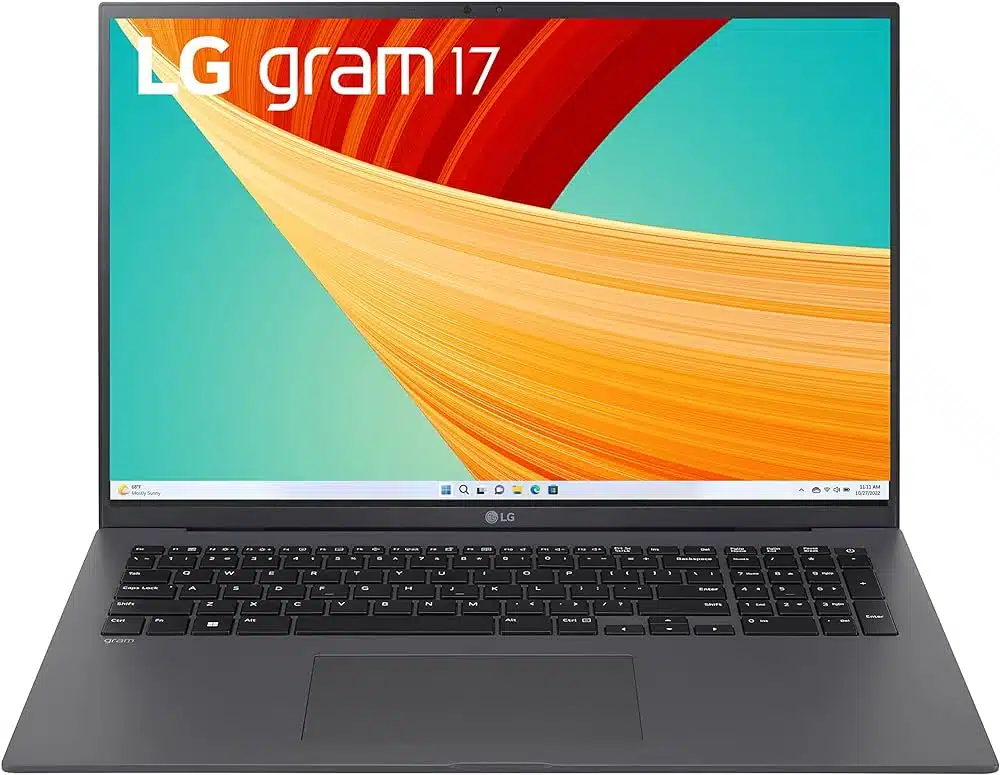
Best Laptop for Backend Developer
CPU: Intel i7-1360P | GPU: Intel Iris Xᵉ Graphics | Storage: 2TB PCIe SSD | RAM Memory Size: 16GB
When it comes to data analysis and data science, no screen real estate is enough. This is why I got the LG Gram 17, which offers an unparalleled blend of power and a large workspace.
Starting with its screen, the LG Gram’s 17-inch display was like having a broad canvas where I could lay out all my work without constantly squinting or losing track. The clarity and colors were spot-on for visualizing data, making patterns and trends easier to spot.
With the Intel Core i7 processor, this laptop could juggle massive datasets and run complex algorithms without any hiccups. And with 16GB of RAM and a whopping 2TB of storage, I never had to worry about running out of space or memory.
But no laptop is perfect, right? The LG Gram 17 is no exception. The speakers left me wanting more, especially during those rare moments of downtime when I tried to relax with some music or a video. My fix? I just plugged in my headphones or connected my external speakers, and it was all good.
Another thing that took some getting used to was the layout of the top-row keys. It felt odd at first, but after some time, I adapted, and it became second nature.
One of my favorite features is the Thunderbolt 4 ports. Transferring data at lightning speed or hooking up extra monitors was a breeze. Plus, the backlit keyboard wasn’t just a luxury; it became essential during those late-night coding sessions.
To sum up, the LG Gram 17 is a reliable laptop for data science. Sure, it has quirks like the audio and key layout, but its performance, screen, and portability more than compensate for them.
| PROS | CONS |
| ➕ Large, high-resolution display perfect for data visualization | ➖ Less than ideal audio quality |
| ➕ Powerful 13th Gen Intel Core i7 processor for efficient data processing | ➖ Awkwardly placed top-row keys |
| ➕ Portable design with a long battery life, ideal for on-the-go analysis | |
| ➕ Thunderbolt 4 ports for fast data transfer and connectivity options |
Latest Price on Amazon:
3. Apple 2023 MacBook Pro — Best for Web Development
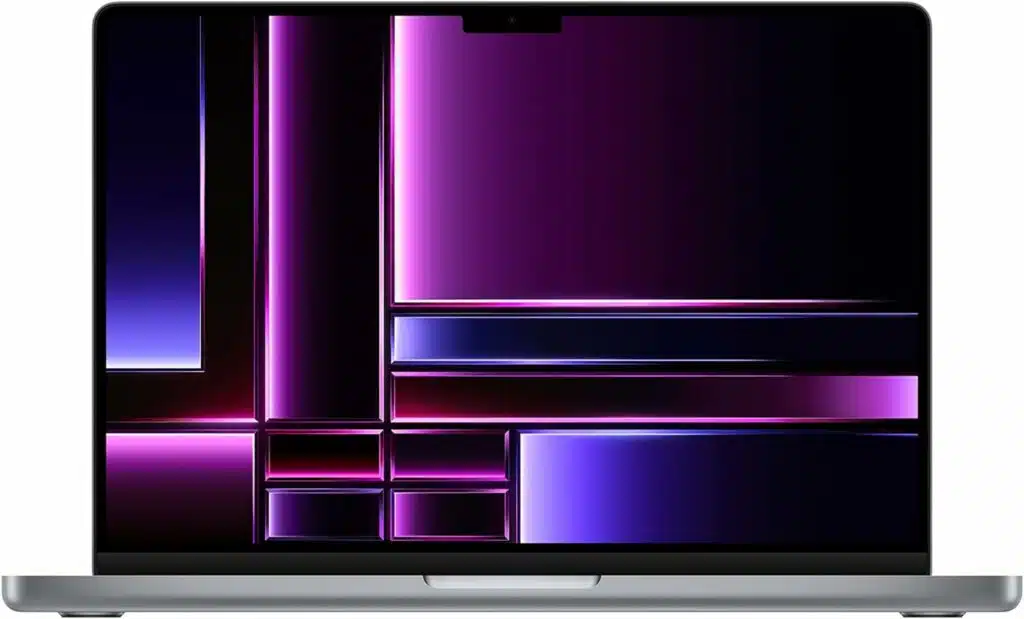
Best Laptop for Flutter Development
CPU: M2 Pro chip | GPU: Apple 30-core GPU | Hard Disk Size: 512GB SSD | RAM Memory Size: 16GB
Back when I was using the Apple MacBook Pro 2023 for my web development work, I noticed a significant improvement in how I approached my projects. It felt like the laptop was specifically designed to tackle developers’ everyday challenges. Let me share what that experience was like for me.
The M2 Pro chip was incredibly powerful. It effortlessly handled everything from complex coding environments to running multiple applications simultaneously.
The graphics capability, thanks to the Apple 30-core GPU, was another standout feature. Seeing my designs on this screen was a revelation as someone who did a lot of front-end work. The colors were vibrant, and the animations were smooth.
The 512GB SSD was a bit limited for my needs, so I had to transfer my data to hard drives every now and then. The 16GB of RAM, on the other hand, was amazing, allowing me to keep my code editor, multiple browsers, and design tools open simultaneously without any lag.
I also have to mention the 14.2-inch Liquid Retina XDR display. Its brightness and clarity significantly reduced the strain on my eyes, even after long hours of staring at code. It was a major benefit, helping to minimize the end-of-day eye fatigue that’s all too common for developers.
However, the unibody design prevented upgrading the laptop. Initially, this limitation was a drawback, but given the MacBook’s performance, the need to upgrade never really arose.
To summarize, the Apple MacBook Pro 2023 stands out because it seamlessly fits into my daily routine, simplifying and enhancing my coding and design tasks. Although the inability to upgrade could be seen as a downside, the overall performance and reliability easily compensate for it.
| PROS | CONS |
| ➕ High performance and efficiency for demanding coding tasks | ➖ Limited Upgradeability due to its unibody design |
| ➕ Full Compatibility with professional applications | |
| ➕ Exceptional Display for a visually stunning coding experience |
Latest Price on Amazon:
4. HP Victus 15 — Best Value Option
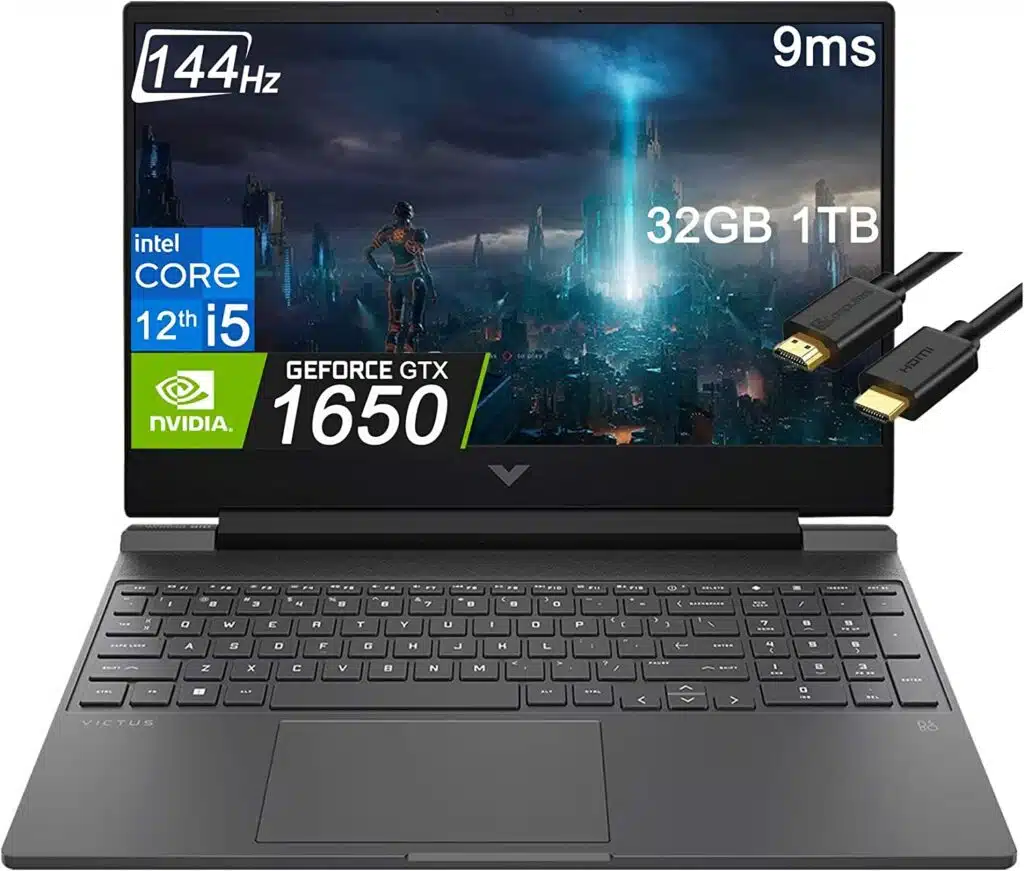
Best Laptop for Software Developer
CPU: Intel i5 12th Gen | GPU: GTX 1650 | Hard Disk Size: 1TB PCIe SSD | RAM Memory Size: 32 GB
Finding a laptop that nails both performance and affordability is tough, but when I got my hands on the HP Victus 15, I felt like I hit the jackpot. It was the perfect device for my coding and software development projects without draining my wallet.
Right out of the box, the 12th Gen Intel i5 processor in the Victus 15 impressed me. This thing was fast. It made multitasking a breeze, whether I was switching between IDEs, running complex code, or just chilling with some music on. The turbo speed of 4.4GHz meant that I hardly ever saw a loading screen for longer than a blink.
The 32GB DDR4 RAM was another highlight for me. It’s like this laptop knew I hated waiting around for programs to respond. I could have everything open at once – my code editor, a couple of databases, web browsers full of tabs for research, and still, the Victus 15 didn’t skip a beat.
Storage was never an issue either, thanks to the 1TB PCIe SSD. I stored many projects, applications, and games and still had space to spare. Everything loaded so fast that it felt like the laptop was always one step ahead of me.
Staring at a 15.6-inch FHD IPS screen that didn’t glare back at me meant I could code for hours without my eyes getting tired. It was comfortable, which is a big deal when you’re knee-deep in debugging and can’t afford distractions.
Some people might see the lack of an optical drive as a downside, but for me, it was not an issue. Additionally, the laptop heated up under heavy load, which made a laptop stand necessary for better ventilation.
While I’ve moved on to other devices, the Victus 15 was a memorable part of my coding journey. It offered me all the essentials without any fuss. For anyone looking for a solid coding laptop that’s easy on the wallet, I’d recommend it.
| PROS | CONS |
| ➕ Powerful 12th Gen Intel Core i5 processor | ➖ No optical drive |
| ➕ Massive 32GB DDR4 RAM | ➖ Heats up under load |
| ➕ 1TB PCIe SSD for super-fast data retrieval | |
| ➕ FHD IPS Micro-edge anti-glare display for eye comfort |
Latest Price on Amazon:
5. ASUS ROG Flow X13 — Best for 3D Modeling
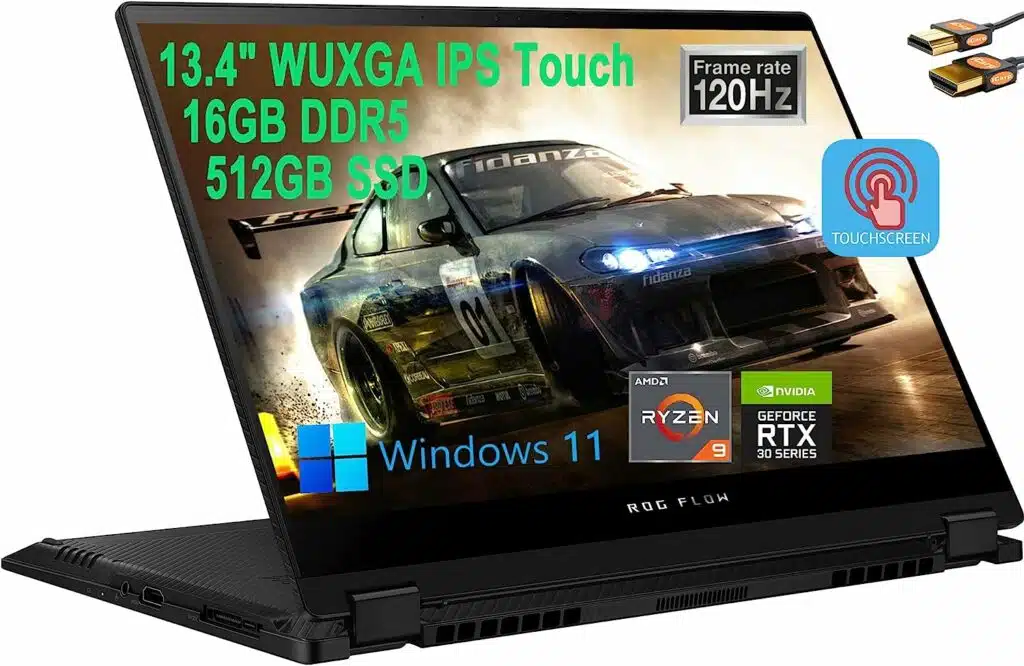
Best Laptop for Scratch Programming
CPU: AMD Ryzen 9 | GPU: GeForce RTX 3050 Ti | Hard Disk Size: 1TB SSD | RAM Memory Size: 16GB
One thing I’ve always struggled with in laptops is finding one that can keep up with the demands of programming and coding without slowing down or overheating. One such laptop that always comes to my mind when I think about the perfect balance of power and reliability is the ASUS ROG Flow X13.
Right off the bat, the AMD Ryzen 9 processor caught my attention. With 8 cores and 16 threads, it’s powerful enough to handle everything I throw at it, from debugging code to compiling and running demanding development environments.
The 13.4″ WUXGA touchscreen display is another feature I didn’t know I needed until I got it. The high-resolution, 120Hz, 500 nits IPS display is a joy to work with. The clarity is unmatched, and the screen real estate is more than enough for my coding and design tasks. Plus, it supports a stylus, which has become a surprisingly intuitive way for me to navigate my projects.
Now, onto the GPU—the NVIDIA GeForce RTX 3050 Ti. It ensures applications, virtual machines, and occasional gaming breaks run smoothly.
The laptop’s portability is another huge plus for me. Weighing just 2.87 lbs, I can easily carry it from home to the office or a café without any hassle. The various ports, including USB 3.2, HDMI, and USB-C with DisplayPort and power delivery, allow me to hook up all my essential devices without worrying about adapters.
However, I have mixed feelings about the 1 TB SSD. It’s ample for most, but when you’re juggling multiple large projects, it can fill up quickly. However, you can always rely on an external hard drive and cloud storage to keep everything organized.
Overall, my experience with the ASUS ROG Flow X13 has been overwhelmingly positive. It’s a powerful, versatile laptop that meets professionals’ coding and programming needs. For anyone in development or game design, this laptop is a solid choice.
| PROS | CONS |
| ➕ Powerful AMD Ryzen 9 6900HS Processor | ➖ Limited SSD storage for large projects |
| ➕ High-resolution, 120Hz touchscreen display | |
| ➕ Advanced NVIDIA GeForce RTX 3050 Ti 4GB GDDR6 GPU | |
| ➕ Ultra-portable design and generous port selection |
Latest Price on Amazon:
6. Acer Aspire 5 — Best Budget Option
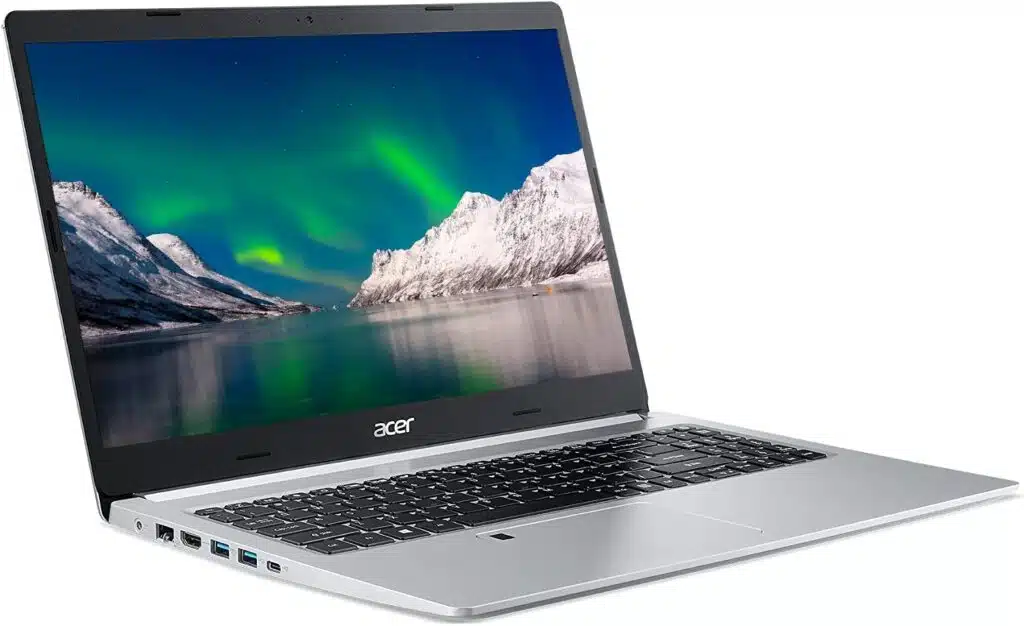
Best Laptops for Programming Students
CPU: AMD Ryzen 5 5500U | GPU: AMD Radeon Graphics | Hard Disk Size: 256GB SSD | RAM Memory Size: 8 GB
If you’re new to programming and coding and looking for a laptop that’s easy on the wallet but still packs a punch, I’ve got to tell you about the Acer Aspire 5. I used this laptop myself when I was starting, and it’s a solid bet for anyone stepping into coding.
First, the heart of this laptop, the AMD Ryzen 5 5500U Hexa-Core Processor, never let me down. From simple code compilation to running multiple development environments like IntelliJ IDEA and PyCharm, it handled everything.
I found the 8GB DDR4 RAM and 256GB NVMe SSD combo just right for my initial needs. I could keep all my essential tools and projects running without the laptop slowing down, and it booted up super fast every time I needed it. Sure, if you’re into bigger projects or need to run many programs at once, this is a bit limiting, but for most coding tasks, it was more than enough.
The graphics, powered by AMD Radeon Graphics, were smooth. I wasn’t using this laptop for gaming or anything, but whenever I needed a break and watched some videos or did some light photo editing on Adobe Photoshop, it handled everything smoothly.
The display and keyboard deserve a special mention. Staring at the screen for hours didn’t strain my eyes, thanks to its 15.6″ Full HD IPS display. And the backlit keyboard? It’s a big relief for those late-night coding sessions. Its various ports, including USB 3.2 (Type-C) and HDMI, were super handy for connecting an extra monitor or charging my phone while I worked.
Now, the 8GB RAM and 256GB SSD felt tight when I started working on more demanding projects. It wasn’t a deal-breaker, but it’s something to consider if you plan on diving into more intensive coding tasks.
All in all, the Acer Aspire 5 was a reliable device during my early coding days. It’s not without limits, especially if you’re looking to expand into more advanced programming territories. For someone just starting or working on moderate projects, it’s a great choice.
| PROS | CONS |
| ➕ AMD Ryzen 5 5500U Processor for fast, efficient performance | ➖ 8 GB RAM and 256 GB SSD might be limiting for heavy-duty tasks |
| ➕ 15.6″ Full HD IPS Display for comfortable, extended use | ➖ Lack of a flash card slot for extra storage |
| ➕ Backlit keyboard for late-night coding | |
| ➕ Extensive connectivity options |
Latest Price on Amazon:
7. Microsoft Surface Laptop 5 — Best Portable Option
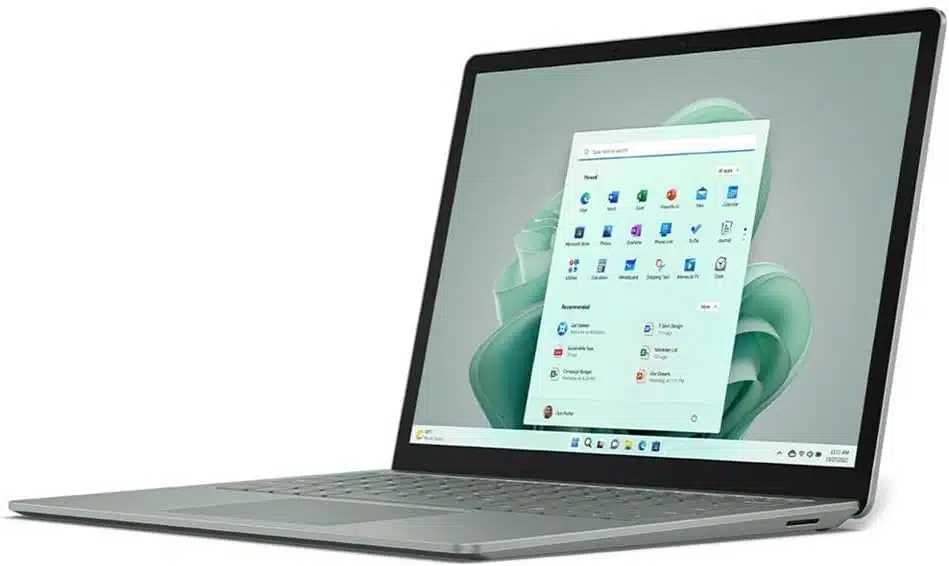
Best Laptop for Mobile App Development
CPU: Intel i7 | GPU: Integrated | Hard Disk Size: 512GB SSD | RAM Memory Size: 16GB
Finding a laptop that could keep up with my mobile lifestyle while packing enough punch was a challenge until I used the Microsoft Surface Laptop 5. This laptop, weighing just 2.69 lbs, made coding in coffee shops, trains, and pretty much anywhere else easy.
The first thing that struck me about the Surface Laptop 5 was its design. Its sleek, platinum look is easy on the eyes and makes carrying it around feel like no chore. And when you open it up, the comfortable keyboard and responsive 13.5″ PixelSense touchscreen are a pleasure to work with. I found myself typing for hours without feeling the usual strain, and the crisp, clear display made coding and debugging much less of a headache.
But what impressed me was the power under the hood. This laptop’s 12th-generation Intel Core i7 processor handled everything from compiling big projects to running multiple applications without any lag.
Even better, the display and sound quality made taking breaks to watch a movie or listen to music enjoyable. The colors popped thanks to Dolby Vision, and the Dolby Atmos speakers produced sound so good, that it was easy to get lost in whatever I was watching or listening to.
The built-in mics and camera also deserve a shout-out. They made my video calls much clearer and more professional. And the fact that I could draw or write directly on the screen with the Surface Pen added a nice touch of versatility to my workflow.
I also can’t say enough about the battery life. I spent countless days working remotely without worrying about finding a power outlet. And when I did need to plug in, the Thunderbolt 4 ports made charging and connecting to other devices a straighforward.
However, it was not all sunshine and rainbows. The lack of a dedicated graphics card was a downer. So, if you’re into heavy graphic design tasks or modern gaming, consider laptops with a dedicated graphic card.
In summary, the Microsoft Surface Laptop 5 is a portable, powerful, and versatile laptop that makes coding on the go not just possible but enjoyable. While it might not be the perfect fit for everyone, especially those into graphics-heavy tasks, it’s been amazing in my programming work and lifestyle.
| PROS | CONS |
| ➕ Powerful 12th Gen Intel Core i7 Processor | ➖ Lacks a dedicated graphics card |
| ➕ 13.5″ PixelSense touchscreen with Dolby Vision | |
| ➕ Great battery life | |
| ➕ In-built Windows 11 security | |
| ➕ Sleek and lightweight design |
Latest Price on Amazon:
8. Lenovo ThinkPad X1 — Best for Virtual Reality Development
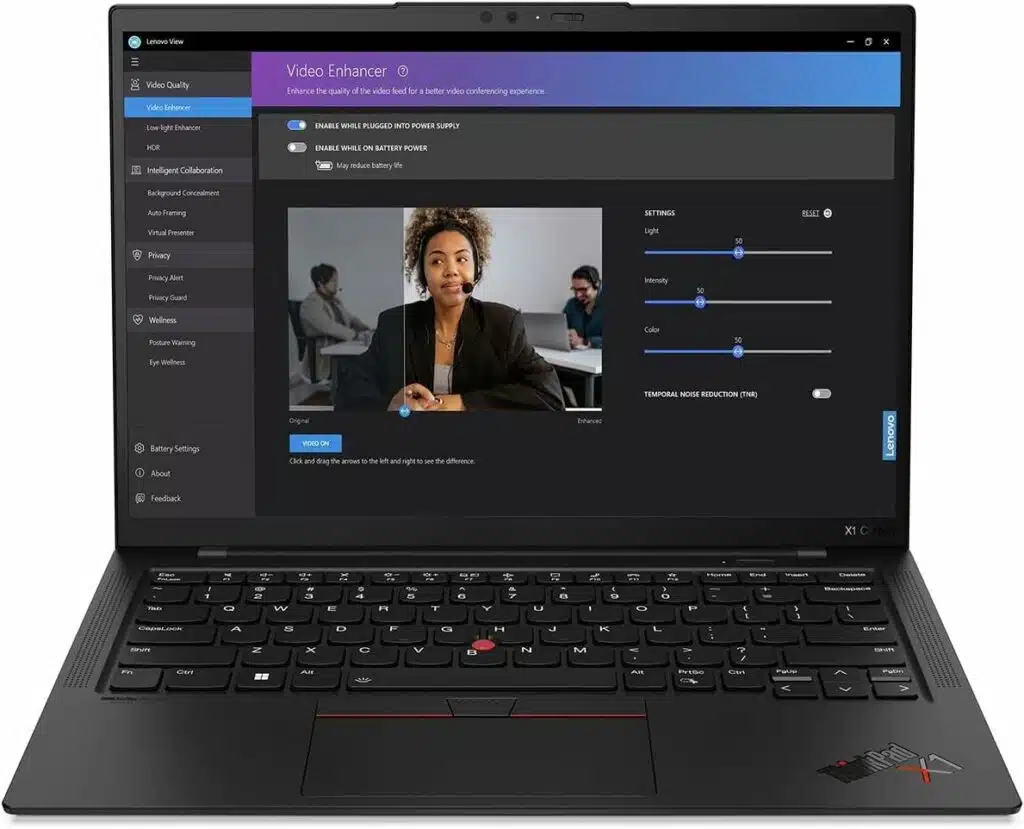
Best Laptop for Docker Development
CPU: Intel Core i7-1280P | GPU: Intel Iris Xe Graphics | Hard Disk Size: 1TB SSD | RAM Memory Size: 32GB
For those in the field of virtual reality development, I suggest the Lenovo ThinkPad X1 for its lightweight design and powerful performance.
First, the 12th-generation Intel Core i7-1280P has vPro tech, 14 cores, and 20 threads. This smooths compiling code, switching between development environments, and running simulations. This level of performance was a huge deal for me, especially when deadlines were tight and I needed things just to work.
I also need to talk about the memory and storage. With 32GB of LPDDR5 RAM and a 1TB PCIe Gen 4 SSD, I noticed a massive difference in how fast I could start and get going on my projects. Applications opened almost instantly, and I never found myself waiting around. For someone who’s always juggling multiple tasks, this speed was outstanding.
Another highlight of this product was the display. The 14″ WUXGA IPS anti-glare touchscreen isn’t just nice to look at; it also made working for long hours easier on my eyes. With its 400 nits brightness and full sRGB color gamut, everything from code to graphics looked crisp and clear.
Now, I did have one gripe—the RAM is soldered, so there’s no way to upgrade it down the line. At first, I worried that 32GB might not be enough for some of the heavier stuff I work on, but I was wrong. It might not suit everyone, especially if you’re running heavy databases or multiple VMs, but it’s plenty for most VR development work.
In summary, the Lenovo ThinkPad X1 Carbon Gen 10 is fantastic for VR development work. It’s powerful and fast, and the screen is a joy. This laptop is worth considering for developers looking for a reliable, portable machine to meet their work demands. Also, check out the best VR headsets for art and gaming.
| PROS | CONS |
| ➕ Powerful processor | ➖ Non-upgradable RAM |
| ➕ Speedy memory and storage | |
| ➕ High-resolution anti-glare touchscreen | |
| ➕ Lightweight and portable |
Latest Price on Amazon:
9. ASUS Zenbook Pro Duo — Best for Game Development
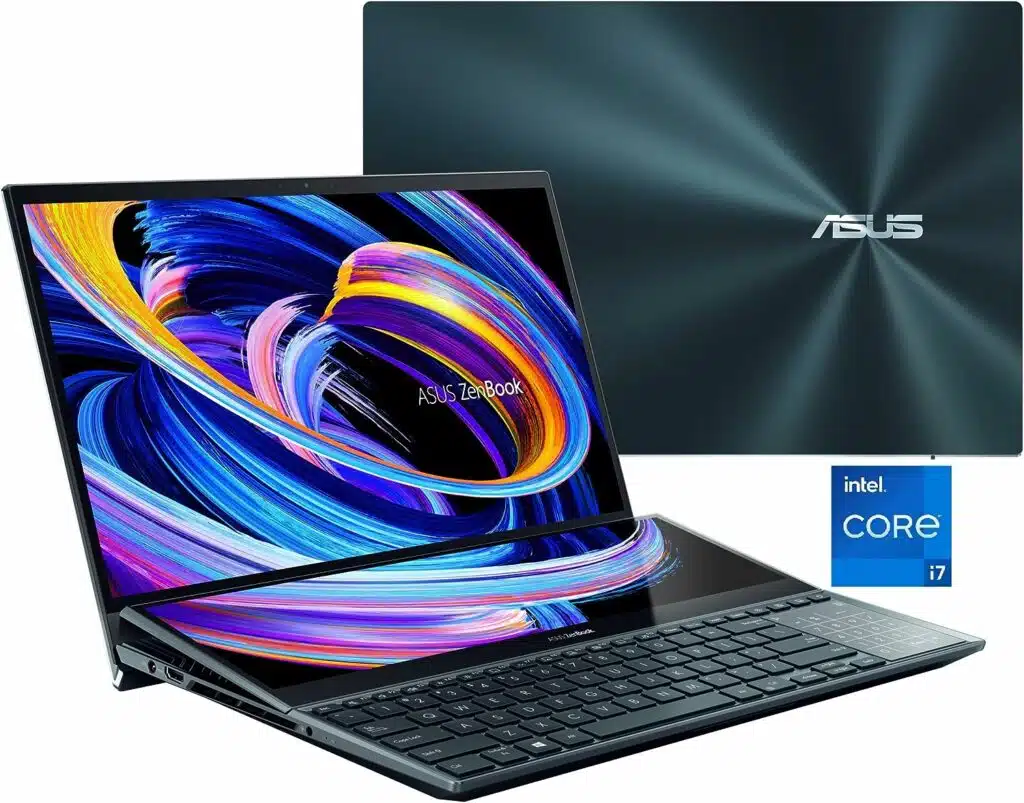
Best Laptops for Coding and Gaming
CPU: Intel Core i9 12th gen | GPU: RTX 3070Ti | Hard Disk Size: 1TB SSD | RAM Memory Size: 32 GB
The heart of a good gaming laptop is its GPU, and one laptop that stood out to me for its graphics was the ASUS ROG Zephyrus Duo 15. This device comes with an NVIDIA GeForce RTX 3080, which means it runs all the latest games and development tools without hiccups. The graphics were so smooth that they made my graphical work a lot more fun and immersive.
I also found its AMD Ryzen 9 processor super impressive. I could have tons of tabs open and run different software at the same time, and the laptop didn’t even flinch. It’s paired with 32GB of RAM, so I never experienced any lag, even with the biggest projects.
Storage is always a big deal since I juggle multiple projects simultaneously. This laptop’s 2TB SSD was more than enough, making everything load super fast. Plus, it has a RAID 0 setup so I can access my files and tools almost instantly.
But what sets this laptop apart is the two screens. The main 15.6” 4K display is stunning, making everything look sharp and vibrant. And the second screen, the ScreenPad Plus, is perfect for keeping extra tools or chats while I work. It’s like having a dual-monitor setup right on my laptop.
I also appreciated the solid internet connection thanks to Wi-Fi 6, and the range of ports made it easy to hook up to other displays or gadgets.
However, it’s not perfect. The laptop is heavy, and carrying it around isn’t easy without a decent laptop bag. Also, when I pushed it with demanding tasks, the battery drained quicker than I’d like.
In short, my time with the ASUS ROG Zephyrus Duo 15 was great. Its powerful specs and unique features supported my projects. Despite its heft and battery life, it was exactly what I needed to bring my projects to life.
| PROS | CONS |
| ➕ Powerful processor and ample RAM for smooth coding | ➖ Potentially short battery life |
| ➕ Dual screens enhance multitasking | ➖ Slightly heavy for on-the-go programmers |
| ➕ Speedy SSD for quick data access |
Latest Price on Amazon:
10. Lenovo 2023 IdeaPad 3 — Best for (UI/UX) Design and Development
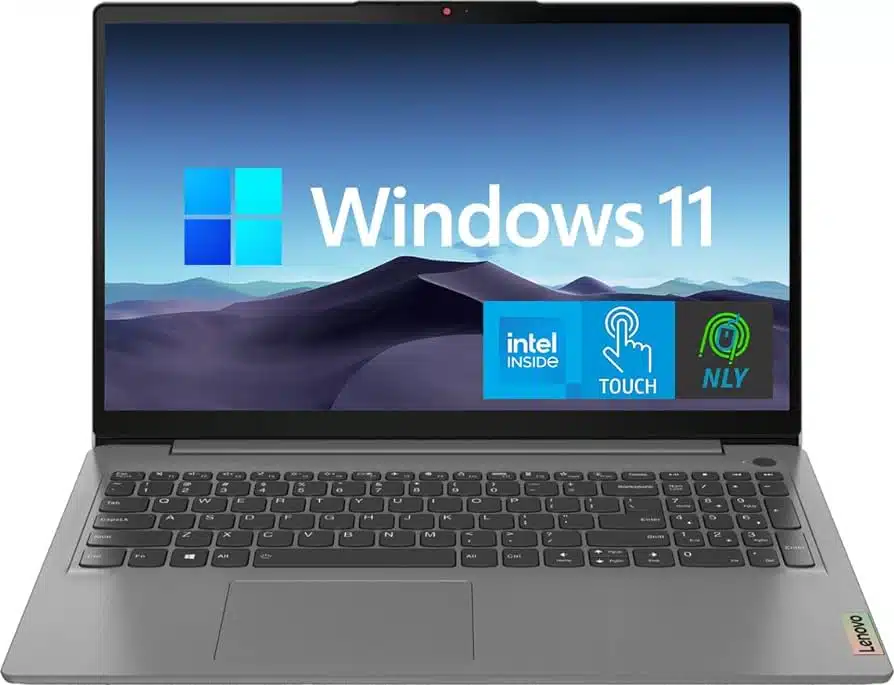
Best Laptop for Full Stack Developer
CPU: Ryzen 5 5625U | GPU: AMD Radeon Graphics | Hard Disk Size: 1TB PCIe SSD | RAM Memory Size: 16 GB
When I started UI/UX design and development, I faced frustrating challenges: sluggish performance with multiple tools, slow software load times, and cramped keyboards that made coding a headache. These problems were too common with most laptops I tried, but then I discovered the Lenovo 2023 IdeaPad 3, and it felt like I hit the jackpot.
Right from the start, the Gen 4 AMD Ryzen 5 5625U Processor effortlessly handled everything without lag and frustration. Running multiple IDEs and debugging tools simultaneously became a smooth experience, thanks to the turbo boost capability of up to 4.30 GHz.
The 16GB DDR4 RAM at 3200 MHz was another standout feature. It allowed me to multitask like a pro, switching between design applications and coding environments without a hitch.
The ample storage of a 1TB PCIe SSD made a world of difference, too. Not only did it offer tons of space for all my projects and tools, but it also ensured that everything loaded up quickly. Typing on the full-size island-style keyboard with a numeric keypad was a relief. It provided the comfort I desperately needed.
I also found the Fingerprint Reader to be a handy addition. It offered that extra layer of security that’s so important when working with sensitive information, a concern always in the back of my mind with other laptops.
However, the integrated AMD Radeon Graphics struggled with graphically intensive tasks, and the battery life left me wishing for more. Moreover, I wasn’t a big fan of its webcam and relied on an external webcam for my virtual meetings.
All in all, the Lenovo 2023 IdeaPad 3 addressed nearly all the headaches I faced with UI/UX design and development on other laptops. While it had its limitations in terms of graphics and battery life, the pros far outweighed the cons, making it a standout choice for anyone looking to streamline their design and development workflow without breaking the bank.
| PROS | CONS |
| ➕ Powerful AMD Ryzen 5 5625U Processor | ➖ Integrated graphics may struggle with high-end graphics tasks |
| ➕ Large 17.3-inch Full HD, Anti-glare Display | ➖ Average battery life that may drain quickly due to the dual screens |
| ➕ Fingerprint Reader for enhanced security | |
| ➕ Comfortable, full-size keyboard |
Latest Price on Amazon:
How I Chose and Assessed the Best Laptops for Programming and Coding Development
To make sure I’m giving you the best laptop recommendations specifically for coding and programming, I created a detailed, step-by-step plan. This wasn’t just about picking any high-rated laptop off the shelf; it was about understanding what coders need and want. So, here’s a deep dive into how I tackled this challenge:
My Selection Process
The process began with me hunting down the top laptops that are cut out for the unique demands of programming. I wasn’t just looking for good specs; I wanted machines that offered—performance, portability, and a keyboard that wouldn’t drive you nuts.
- Scouring for the Best: I kicked things off by compiling a list of laptops that were already making waves for their coding capabilities. I paid extra attention to features like how well they perform under load, how easy they are to carry around, and if they have a keyboard that feels just right.
- Digging into Specs: Next, I laid out all the specs side by side. This wasn’t just about the numbers for me. It was about seeing how each laptop could potentially fit into a coder’s daily grind, from handling complex projects to those marathon coding sessions.
- OS Compatibility Check: Since the tools and environments are pretty much tied to the operating systems we’re comfortable with, I zeroed in on laptops running macOS, Windows, and Linux. It was crucial that whatever I picked could seamlessly integrate with the coding platforms.
- Real Feedback and Expert Opinions: I didn’t stop at specs. I dove into user reviews across tech blogs, forums, and online stores and even reached out to a few coding pros. I wanted to get a feel for how these laptops held up in the real world, especially when it came to tackling coding tasks.
My Evaluation Process
With my shortlist in hand, I put each laptop through tests designed to push their limits in ways that matter to us as coders:
- Performance Under Pressure: I fired up IDEs like PyCharm and Visual Studio Code, running and compiling code to see how each laptop handled multitasking and crunch time. It was all about finding machines that could keep pace without breaking a sweat.
- Keyboard Quality Check: Since coders spend hours typing away, I paid special attention to the keyboard. It needed to feel right—comfortable typing, responsive keys, and a layout that doesn’t mess with your flow.
- Screen Time That Doesn’t Hurt: Given the hours coders stare at our screens, I scrutinized display quality, looking at size, resolution, and whether it was easy on the eyes during those late-night coding sessions.
- Staying Connected: I tested each laptop’s connectivity options. It was important to me that hooking up the essentials—external displays, your favorite mouse, or a chunky keyboard—was easy.
- Battery Life Real-World Test: I drained the batteries doing coding, browsing, and occasionally procrastinating with a video or two. I needed to know these laptops could last through a day of work without chaining you to a socket.
- On-the-Go Gauge: As someone who likes to work in cafes, libraries, and occasionally parks, I weighed and measured each laptop to find that sweet spot between power and portability.
By sticking to this thorough plan, I’m confident that the laptops I’ve picked out are not just good on paper but truly meet the unique demands of coding professionals.
A Comprehensive Guide to Finding the Best Laptop for Programming and Coding Needs
Are you still unsure about what you really need? Here’s a comprehensive list of qualities you may want in your next machine for those extra coding oomph points! Read on:
💪 Powerful Processor
For coding, a fast and efficient laptop processor is crucial. It ensures smooth multitasking and efficient execution of code. The Intel Core i7, i5, or AMD Ryzen 5, 7 series are excellent choices for handling complex programming tasks. Additionally, you need a powerful cooling system to dissipate all the heat the processor creates. Keeping that in mind, the ASUS ROG Flow X13 stands out for processing prowess, boasting a high-core count CPU. Its robust thermal management system efficiently dissipates heat, maintaining peak performance even under intense coding workloads.
🧠 Ample RAM
A minimum of 8GB RAM is essential for running multiple applications and code editors simultaneously without slowing down. For heavy coding or running virtual machines, 16GB or more is preferred. The Lenovo ThinkPad X1 stands out for users seeking maximum RAM and memory speed. Its soldered LPDDR5 RAM, clocking at an impressive 5200 MHz, ensures rapid data transfer and smoother multitasking, enhancing your coding and development experience.
🚀 SSD Storage
Solid-state drives (SSD) provide faster read-write speeds than traditional HDDs. This significantly reduces the loading time of your IDE and the execution time of your programs, boosting overall productivity. If you want a laptop with expansive memory, go for the Apple 2023 MacBook Pro, which features 1TB SSD storage in the box. The best part is you can upgrade it to a maximum of 8TB SSD.
Good Screen Size and ResolutionA larger laptop screen size (15-17 inches) and high resolution can help reduce eye strain during long coding sessions. Higher resolutions like Full HD or 4K can display more content, which is beneficial when working with complex codes. The ASUS Zenbook Pro Duo offers more screen real estate, featuring a 15.6-inch 4K UHD OLED main screen and a full-width 4K secondary touchscreen: the ScreenPad™ Plus. Together, they offer an expansive, near-borderless visual workspace for the multitudes of code you will be writing on it.
🖥️ Comfortable Keyboard
Programming naturally involves a lot of typing. That’s why a comfortable, backlit keyboard with good key travel distance can significantly enhance your coding experience, especially during those late-night sessions. The Lenovo ThinkPad X1 boasts an impeccably ergonomic keyboard. Its well-spaced keys, satisfying tactile feedback, and TrackPoint pointing device all contribute to a comfortable and efficient typing experience, ideal for coding and programming tasks.
🔋 Long Battery Life
For coders who prefer working in different environments or travel frequently, a laptop with long battery life is necessary. This way, you can code uninterrupted without constantly worrying about finding a power outlet. The Apple MacBook Pro with M3 chip shines in terms of battery longevity. Thanks to its efficient M3 chip and a large battery, this machine boasts a fantastic battery life of over 20 hours.
🏃♂️Portability
If you’re a programmer who’s frequently on the go, a lightweight and compact laptop is essential. Being able to conveniently carry your work with you can significantly enhance your productivity. The Microsoft Surface Laptop 5 is a champion of portability. Its ultra-lightweight of just 2.69 lbs, thanks to its sturdy magnesium alloy chassis, makes it one of the most transportable laptops in the market, outpacing competitors with ease.
Frequently Asked Questions
What processor speed is recommended for programming and coding development?
For programming and coding development, a high-speed processor is recommended to ensure the efficient execution of tasks. A processor with at least a 2 GHz clock speed can handle most coding applications, but for intensive tasks, you'd need more processing power. The new Ryzen and Intel i7/i9 CPUs clocking between 3-5 GHz offer the most smooth and efficient coding experiences.
What type of storage (HDD vs SSD) is better for a programming laptop and why?
An SSD (Solid State Drive) is recommended for programming laptops, rather than an HDD (Hard Disk Drive). While HDDs tend to be cheaper, SSDs are much faster, which speeds up the execution of applications and boot times. Quick access to files and software is crucial in programming, making SSDs a preferred choice.
Can a laptop with high-end gaming specifications be also used effectively for programming and coding?
Yes, a laptop with high-end gaming specifications can be very effective for programming and coding. High-end gaming laptops typically have powerful processors, plenty of RAM, and robust graphics cards. These components are beneficial for running code efficiently, especially when handling data-intensive tasks, graphics programming, or when running resource-heavy development environments. This explains why HP Victus 15 makes such an excellent coding/programming laptop.
What are the system requirements for running popular Integrated Development Environments (IDEs) like PyCharm, IntelliJ, and Visual Studio Code?
For popular IDEs like PyCharm, IntelliJ, and Visual Studio Code, you need a processor with a minimum speed of 2 GHz (though higher is better), at least 8 GB of RAM (16 GB is ideal for smoother operation), and a minimum of 5 GB of storage. However, these are baseline requirements, and depending on the complexity of your coding projects, you may benefit from even higher specs.
Finding the Best Laptop for All Your Programming and Coding Needs
Now that I have reviewed every possible contingent, it’s clear that there’s no one-size-fits-all developer laptop. Different developers have different needs, and what might be a good laptop for one may not necessarily tick all the boxes for another. It’s all about finding that sweet spot between performance, portability, and price.
If you’re still on the fence, I’d highly recommend the Apple MacBook Pro with M3 chip – which arguably emerged as the best programming laptop through our testing process. It’s a powerhouse of a machine that truly stands out in the crowd. With its excellent blend of robust performance and lightweight design, this laptop is perfectly attuned to the demands of programming and coding development.
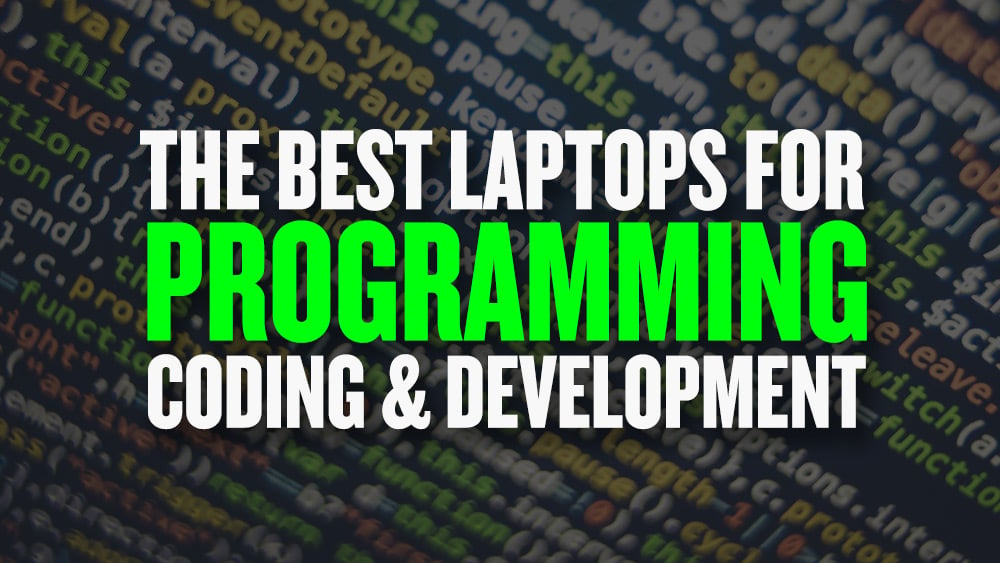
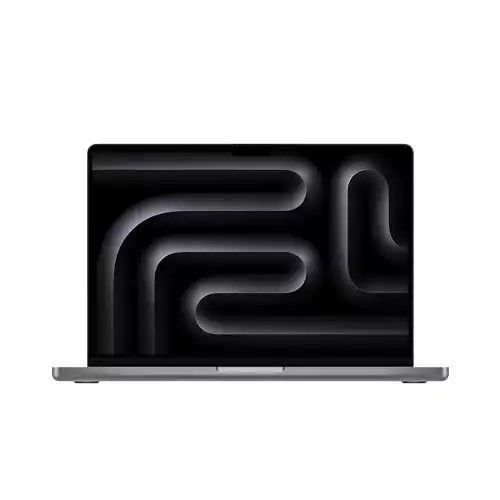
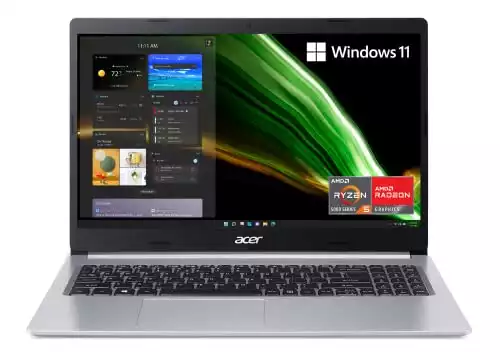
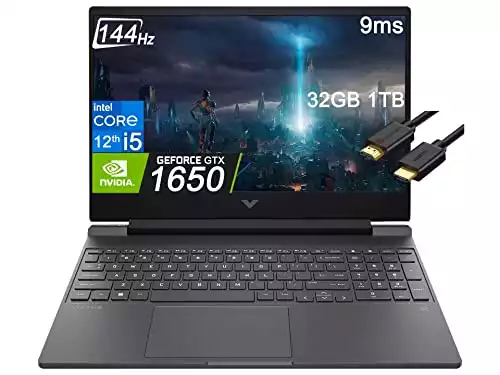

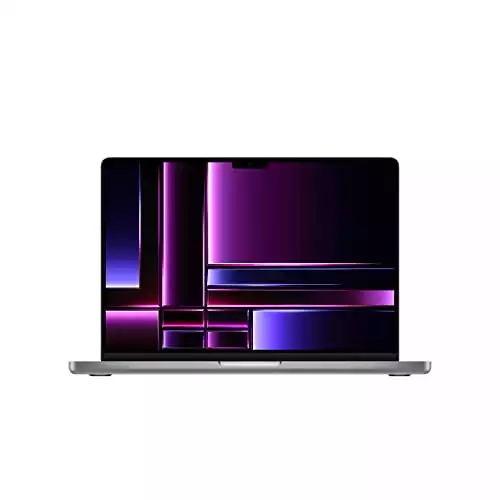
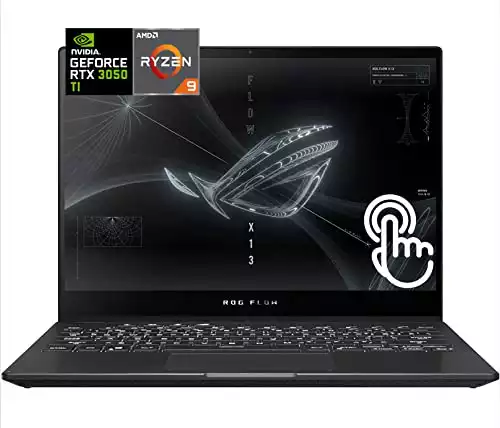
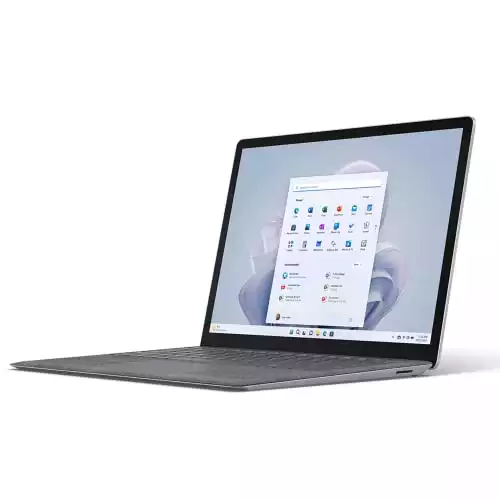
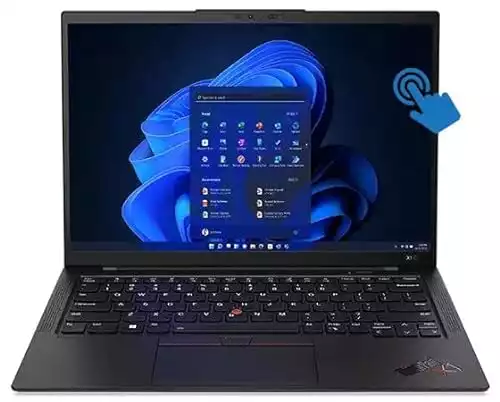
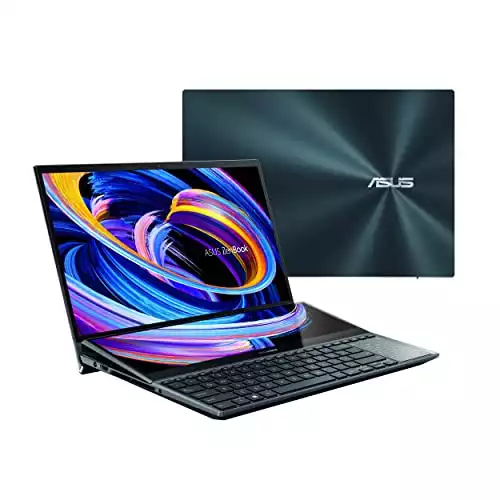


well done jacob!!